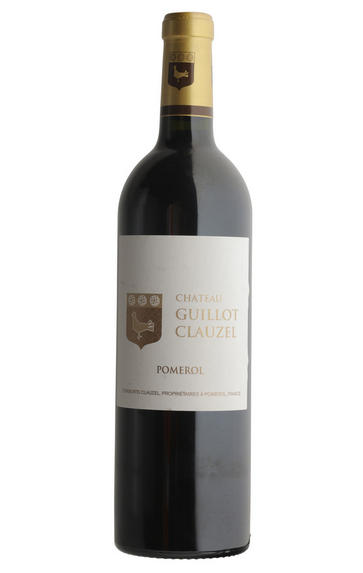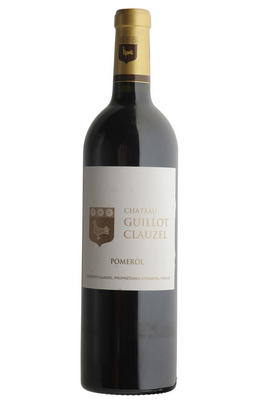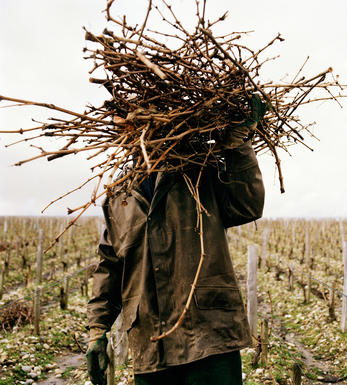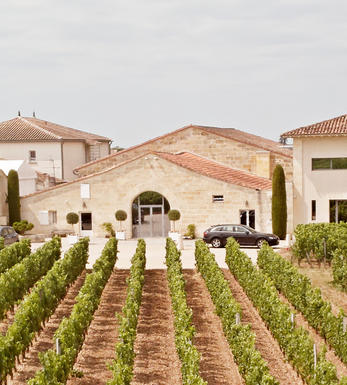
2020 Château Guillot Clauzel, Pomerol, Bordeaux

Critics reviews
The 2020 Guillot-Clauzet is overseen by Guillaume Thienpont of Vieux-Château-Certan. Picked September 15–28 and matured in 50% new oak, it has quite a lush black cherry, raspberry coulis and black truffle bouquet that unfurls in the glass. The palate is medium-bodied with pliant tannins and very well-integrated oak. This Pomerol has a lovely balance; it’s not powerful and ostentatious, but refined. There’s a judicious sprinkling of black pepper toward the finish. This is well worth seeking out.
Drink 2025 - 2040
Neal Martin, Vinous.com (May 2021)
The 2020 Guillot-Clauzel has come together beautifully since I tasted it en primeur. Most notably, the oak (50% new) has integrated very nicely, even better than I expected to be honest. Spice, pepper, graphite and scorched earth lend an exotic, deep quality to the aromatic profile that is quite intriguing. As always, Guillot-Clauzel has a certain nerviness in its tannin that makes it a Pomerol more of structure than of seductive charm. Even so, the 2020 is quite impressive. Hints of spice, cedar and tobacco linger on the savoury finish.
Drink 2027 - 2040
Antonio Galloni, Vinous.com (February 2023)
Composed of 85% Merlot and 15% Cabernet Franc, the 2020 Guillot Clauzel has an alcohol of 14.5% and a pH of 3.72. It is ageing in French oak barriques, 50% new. Opaque purple-black coloured, it bursts from the glass with bold, opulent scents of crushed black cherries, warm black plums and violets, giving way to hints of raspberry leaves, Sichuan pepper and anise.
The medium to full-bodied palate is chock-full of ripe, rich, decadent black fruits with loads of red fruit and floral sparks and a backbone of velvety tannins, with great tension to boot, finishing long and spicy. The consultant winemaker here is Guillaume Thienpont (of Vieux Chateau Certan), and he is doing an amazing job of breathing fresh life into this promising Pomerol site!
Drink 2025 - 2045
Lisa Perrotti-Brown MW, Wine Advocate (May 2021)
This has a ton of perfume and charm, so much juice and Pomerol appeal. Plenty of chocolate and autumnal berry fruit a sappy if austere finish. An enjoyable, appealing and heartfelt Pomerol, really one to recommend and to track down. Third vintage with Guillaume Thienpont as consultant and viticulturist, a little less Cabernet Franc this year due to a low 30hl/ha yield.
Drink 2024 - 2038
Jane Anson, Decanter.com (May 2021)
85% Merlot, 15% Cabernet Franc. Property managed by Guillaume Thienpont of Vieux Château Certan. Cask sample.
Deep colour. Floral aromatics. Sweet attack then fine fruit and tannins. Smooth texture. Very precise. Slight glow on the finish but lots of charm.
Drink 2026 - 2035
James Lawther MW, JancisRobinson.com (April 2021)
A blend of 85% Merlot and 15% Cabernet Franc, the 2020 Guillot Clauzel has turned out beautifully. Wafting from the glass with aromas of dark cherries, plums and liquorice, it's medium to full-bodied, elegantly layered and fleshy, with a vibrant core of fruit, polished tannins and a penetrating finish. As readers will remember, this 2.5-hectare estate has been managed by Vieux Château Certan's Guillaume Thienpont since 2018.
Drink 2025 - 2045
William Kelley, Wine Advocate (April 2023)
A classy, refined red, highlighting the success in Pomerol for the vintage. It’s full and tight with layered tannins that are polished and gorgeous.
James Suckling, JamesSuckling.com (June 2021)
The deep ruby/purple-hued 2020 Château Guillot-Clauzel has a classy, textbook Pomerol perfume of ripe red and blue fruits, leafy herbs, sappy spring flowers, and chocolate. With medium to full-bodied richness, it has a wonderful sense of elegance, polished tannins, and depth as well as purity that's common from this appellation in 2020. This is one sexy Pomerol to drink on release and over the following 15+ years.
Jeb Dunnuck, JebDunnuck.com (May 2021)
About this WINE

Château Guillot-Clauzel
Château Guillot-Clauzel is a family-owned wine producer in the Pomerol appellation of Bordeaux, France. The property has been in the hands of the Guillot family for many years; Bernard Guillot brought the Clauzel name into the estate by marrying Marie-Claude Clauzel in the 1970s. The couple's union combined the two family names, leading to the formation of Guillot-Clauzel.
A mix of clay and limestone soils characterises the terroir. This unique combination contributes to producing wines with remarkable complexity and structure. Merlot is the dominant grape variety grown on the property, reflecting the region's traditional style, where Merlot-based blends are prevalent.
Guillot-Clauzel is known for its commitment to traditional winemaking practices and a focus on producing wines that express the essence of their terroir. The estate follows sustainable and environmentally friendly viticultural practices, ensuring the health of the vineyards and the surrounding ecosystem.
The winemaking process involves careful selection of grapes, gentle handling, and ageing in a combination of French oak barrels to enhance the wine's character and complexity. The result is elegant, well-structured wines that can age gracefully over time.

Pomerol
Pomerol is the smallest of Bordeaux's major appellations, with about 150 producers and approximately 740 hectares of vineyards. It is home to many bijou domaines, many of which produce little more than 1,000 cases per annum.
Both the topography and architecture of the region is unremarkable, but the style of the wines is most individual. The finest vineyards are planted on a seam of rich clay which extends across the gently-elevated plateau of Pomerol, which runs from the north-eastern boundary of St Emilion. On the sides of the plateau, the soil becomes sandier and the wines lighter.
There is one satellite region to the immediate north, Lalande-de-Pomerol whose wines are stylistically very similar, if sometimes lacking the finesse of its neighbour. There has never been a classification of Pomerol wines.
Recommended Châteaux : Ch. Pétrus, Vieux Ch. Certan, Le Pin, Ch. L’Eglise-Clinet, Ch. La Conseillante, Ch. L’Evangile, Ch. Lafleur, Trotanoy, Ch. Nenin, Ch. Beauregard, Ch. Feytit-Clinet, Le Gay.

Cabernet Sauvignon Blend
Cabernet Sauvignon lends itself particularly well in blends with Merlot. This is actually the archetypal Bordeaux blend, though in different proportions in the sub-regions and sometimes topped up with Cabernet Franc, Malbec, and Petit Verdot.
In the Médoc and Graves the percentage of Cabernet Sauvignon in the blend can range from 95% (Mouton-Rothschild) to as low as 40%. It is particularly suited to the dry, warm, free- draining, gravel-rich soils and is responsible for the redolent cassis characteristics as well as the depth of colour, tannic structure and pronounced acidity of Médoc wines. However 100% Cabernet Sauvignon wines can be slightly hollow-tasting in the middle palate and Merlot with its generous, fleshy fruit flavours acts as a perfect foil by filling in this cavity.
In St-Emilion and Pomerol, the blends are Merlot dominated as Cabernet Sauvignon can struggle to ripen there - when it is included, it adds structure and body to the wine. Sassicaia is the most famous Bordeaux blend in Italy and has spawned many imitations, whereby the blend is now firmly established in the New World and particularly in California and Australia.


Buying options
Add to wishlist
Description
The 2020 Guillot-Clauzel has come together beautifully since I tasted it en primeur. Most notably, the oak (50% new) has integrated very nicely, even better than I expected to be honest. Spice, pepper, graphite and scorched earth lend an exotic, deep quality to the aromatic profile that is quite intriguing. As always, Guillot-Clauzel has a certain nerviness in its tannin that makes it a Pomerol more of structure than of seductive charm. Even so, the 2020 is quite impressive. Hints of spice, cedar and tobacco linger on the savoury finish.
Drink 2027 - 2040
Antonio Galloni, Vinous.com (February 2023)
wine at a glance
Delivery and quality guarantee